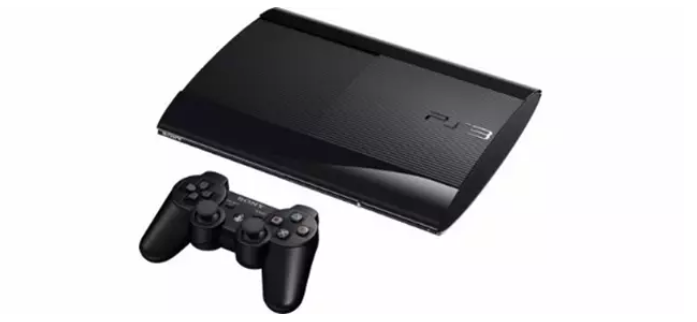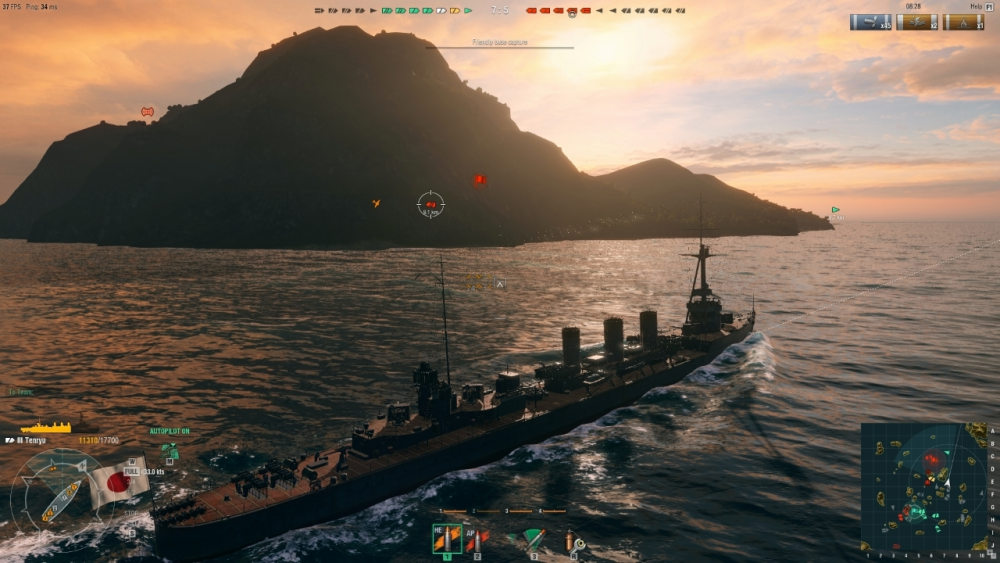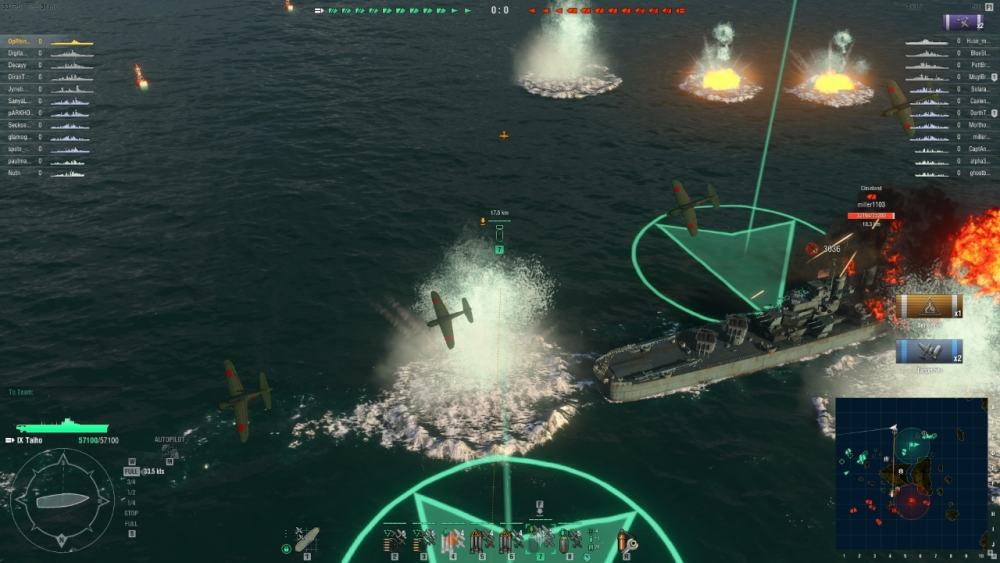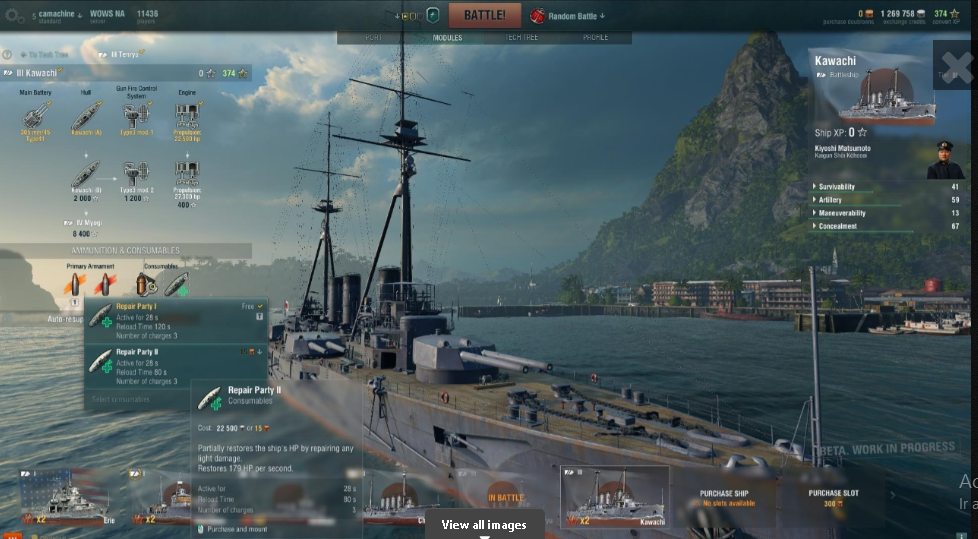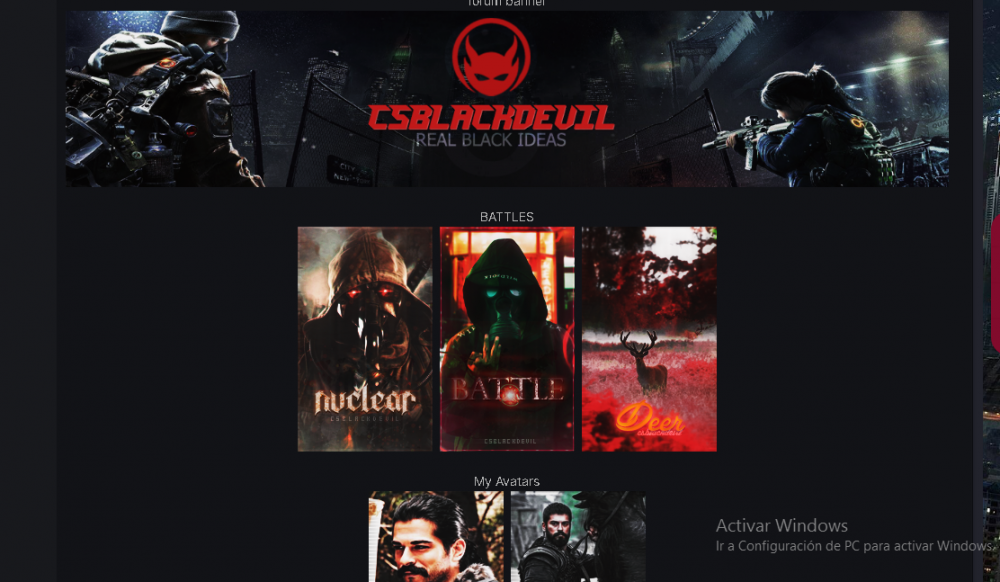Everything posted by Dark
-
Google has used 3D mapping in conjunction with machine learning to improve the accuracy of geolocation systems in densely populated urban areas. In densely populated urban settings, geolocation systems can show inaccuracy, for example by locating the wrong side of a street or even in the wrong building. It is the "last great unsolved problem" of GPS, as indicated by Google. This is due to how the signals of these systems are reflected in large cities - large buildings block the direct signals sent by satellites - and therefore they have decided to use 3D mapping to correct inaccuracies. The solution they use at Google includes 3D models of buildings, raw GPS measurements and machine learning, as explained in the official Android Developers blog. The module on Google Play that contains the 3D mapping for corrections has models of buildings from more than 3,850 cities around the world. When the user uses the GPS service on his mobile, the device downloads the three-dimensional models of the city where he is, to make corrections for that specific city with the help of algorithms. It is a solution compatible with GPS, but also with other satellite navigation systems, such as GLONASS, Galileo, BeiDou and QZSS. This solution has now been introduced on the Pixel 5 and Pixel 4a 5G phones with the December update, and works in conjunction with Qualcomm's Snapdragon 5G processor that integrates the two devices to improve accuracy in cities. The company has reported that this solution will be available for the Android ecosystem (starting with Android 8.0) early next year.
-
Game Informations : Developer: Daniel Starkey Platforms: PS4, PC Initial release date:September 18, 2015 at 3:14PM PDT It’s a strange thing to know that you’re powerless. As the realization dawns, possibilities and options fall away, leaving you with one inevitable conclusion. While wave after wave of my bombers streak across the sky, I have to imagine that my opponent is feeling helpless. When the bombers drop their payload, it will mark my sixth consecutive multiplayer victory using the same tactic. But the more I play, the more I’ve come to realize that Act of Aggression builds itself on these moments. Each player probes his or her foes, poking for weaknesses before they inexorably find one. But even then, the end comes slowly, and the loser has time to reflect on what went wrong. On paper, Act of Aggression isn’t that different from any other RTS. You have three basic functions that represent the three core tactics these sorts of games have always had: one for rushing an enemy before they can get themselves established, one for building up defenses until you can wait for superior (albeit more expensive) technology to overwhelm your foes, and one that’s a balance of the two. You gather resources, build bases, train units, and gain control of territory. None of this is new, and Act of Aggression doesn’t handle these ideas in any novel or particularly interesting ways. What makes Act of Aggression special is its rhythm. Each match begins with a core base and one scouting unit. Pretty standard so far. Immediately, though, the formula begins to diverge. Because there's no central location where you'll find all the resources you need, nor any way to build out your base with larger and larger shells as in Age of Empires, you're forced to do things a little differently. First I'd rush with lightly armed troops, stretching out with vulnerable tendrils grabbing what I could. Then I'd hunker down and secure the position with big guns and long-term emplacements. Both of these tactics are common in other games, but here they are essential, and it means that outposts need to be self-sufficient. Play, then, revolves around poking your opponents' units and buildings to see if they've been careless, to see what they've neglected. Any position can be overwhelmed with enough force, but if you're playing well you'll often spread yourself a bit too thin to secure everything. This makes for an interesting twist on the usual pattern of strategy game play, and one that always left me uneasy. I never felt safe or secure-- was always pushing and always repelling. By itself, that pattern of play is remarkable. It's exhilarating, and I found myself challenging my own tried and true tactics and algorithms I'd built and refined after years of competitive strategy gaming. But it doesn't take long for cracks to start showing in that veneer. The first and by far the biggest problem Act of Aggression faces is that achieving a level of fluency The first and by far the biggest problem Act of Aggression faces is that achieving a level of fluency, where play is comprehensible and more importantly manageable, takes some work. As yet, there's no proper tutorial, and the campaign follows some of the worst tropes of its genre. Act of Aggression locks units, buildings, and ideas behind arbitrary walls, only revealing them for isolated lessons that don't teach you how to use these tools and adapt to new challenges. Instead it holds you to a strict path without being able to explore the potential of its own design. If anything, I found that finishing the campaign left me worse off when it came time to square with others. That's exacerbated by abysmal voice work and a cliché plot torn straight from the pages of a Clancy novel. Even when you do familiarize yourself with the proceedings, Act of Aggression bogs itself down with unnecessary fluff. Your typical battle will have you working with twenty or more buildings, for example, most of which look so similar that it's hard to keep each of them straight. It leads to odd situations where you'll build a "light vehicle" factory that can also make some of the strongest attack copters in the game, long before you have access to the ostensibly helicopter-centric "helipad." That'd be excusable, of course, if the latter building was strictly better, but I only used it once. This is a complaint that runs throughout. Some units have niches so specific that it's a wonder their role wasn't condensed into something simpler. Yes, options are generally a great idea, but in a game that already struggles with a clean and effective user interface, this manifests as another frustration. It gives the impression that most of the game could have been condensed. It complicates affairs without adding anything of value into the mix. Act of Aggression's user interface is similarly overwrought. The expand-hold-expand structure encourages waging several small battles across multiple fronts at once, but there's no persistent indication of where you need to direct your attention. There is a ticker in the upper-left hand corner of the screen, but clicking those notifications doesn't auto-snap to the event the game describes. It often led me to lose track of threats and left me ill-informed about the status of the battlefield. Despite these problems, Act of Aggression manages to find legs in multiplayer matches. In my time with the game, I played more than a dozen rounds with a bevy of opponents and each was an exhilarating slugfest. Despite these problems, Act of Aggression manages to find legs in multiplayer matches. Keeping to the rhythm I described earlier, I'd start by reaching out for critical points on the map and lock myself down, waiting for my foes' nascent probes. Countless times we'd start firefights that lasted the rest of the game. Banks--neutral buildings that provide a steady, constant stream of income to any player that holds them--were particularly contentious. When infantry takes refuge in a bank, they're well-defended, making them a difficult target for opposing soldiers to capture. Even with plenty of support, wresting an established foothold near a bank is almost impossible. Yet, the cost was low enough and the reward high enough to incentivize a constant, smoldering conflict. When one of us did start to crack, though, it took time to restructure our war efforts and finish the job. And that's the biggest oddity here. For all of its speed, for all of its, well, aggression, the final moments of any given match are typically quiet. Even when players start wielding the earth-shattering super weapons, countermeasures are easy to deploy. Again, it means that you're waiting to find the one thing your opponent never considered, the one thing they ignored or thought they could do without if only for a little while. These kinds of games don't exist anymore. For better or worse, Act of Aggression isn't from this decade. It opens with riotous bombast backed with haughty metal riffs and maintains a jubilant, adolescent tone throughout. It's rough, it's incomplete, it's awful in places. But it's also raw and decadent. Soaked to the core in that quintessentially nineties cocktail of cynicism and an exultant love of violence, playing Act of Aggression feels like going back in time and returning to a home that only exists in your oldest memories. And that's special, even if it means dealing with some obtuse design issues. System Requirements OS: WINDOWS VISTA/WINDOWS 7/WINDOWS 8. Processor: AMD/INTEL DUAL-CORE 2.5 GHZ. Memory: 2048 MB RAM. Graphics: 512 MB 100% DIRECTX 10 COMPATIBLE AMD RADEON HD 4870/NVIDIA GEFORCE 9800 GT OR HIGHER. Storage: 15 GB available space. Sound Card: DIRECTX 10 COMPATIBLE.
-
Accepted!
-
#pro for GFX helper
-
15k Reputation, 5k Post, 50000 profile views ❤️
-
The singer-songwriter Manuelcha Prado and the communicator Sigrid Bazán will be candidates for Congress by the group Together for Peru, which completed its list of candidates for the Legislature for Lima for the 2021 Elections. This was confirmed by the president of that party, Roberto Sánchez, who indicated that both go as guests, following a decision by the National Executive Committee (CEN). Sánchez explained that the CEN of Together for Peru considered the trajectories of both in their respective areas to invite them. "They are designated guests, with them the list for Metropolitan Lima is complete," Sánchez told Andina news agency. Regarding the publication of the lists of candidates, the president of Together for Peru said that they will do so this Monday or Tuesday. He added that they will request the registration of their presidential formula and candidates on December 15. The president of Together for Peru, Roberto Sánchez, confirmed that the communicator was invited along with the singer-songwriter by Metropolitan Lima. He also said that the National Executive Committee (CEN) considered the trajectories of both to invite them. "Although the deadline is until the 22nd, we want to do it earlier within the framework of the orderly work that we have been developing," he added. He also stated that due to the context of the pandemic, they will have an important presence through social networks to develop their campaign activities. However, they will continue with face-to-face meetings always with respect to biosafety protocols.
-
DH2, like it music
-
DH1, legend music!
-
Within the PC ecosystem, we basically have three different categories: desktop PCs (in their different formats), laptops and All in One computers; the latter are separated from the usual desktop PCs because although they are, indeed, desktop PCs, the hardware they equip makes them a kind of middle ground. In any case, is it worth buying an All in One PC over a desktop PC or a laptop? We are going to see its advantages and disadvantages to unravel this unknown. All-in-One computers are those that integrate all the hardware components of the PC in the same case as the screen, and this is the main difference with respect to desktop PCs. With respect to laptops, the difference is that they do not incorporate a keyboard and mouse, although in most cases they do incorporate speakers and even a webcam. Advantages and disadvantages of All in One computers The main advantage of this type of computer is, obviously, the saving of space. The fact that all the components are integrated in the same case as the screen makes it much thicker and heavier than an individual monitor, but it totally saves us having a PC case on or under the table, as well as the wiring of the same . All in one The second advantage, for those who like that, is aesthetics, since it allows to have a more minimalist and contained environment than with a PC case, even if there are cases with minimalist aesthetics. As for the disadvantages, there are really many more than the advantages: the first is that since the hardware is "embedded" in the monitor housing, there is much less space to begin with than in a desktop PC, and for that reason it is common that these computers incorporate laptop hardware instead, essentially becoming "desktop notebooks", and therefore generally perform less well than a desktop PC. This at the same time causes that, as the components are so close together and so little space to be able to incorporate thermal solutions in conditions, the temperature is a constant problem when performance is required in these equipment, and at the same time for the same reason they are usually quite noisy, even louder than laptops because they have the screen panel as an additional element generating heat. Are these computers worth it? As a general rule, we would say that these teams are the middle ground between a desktop PC and a laptop. They provide roughly the same performance as a laptop, although there are some All in One that do mount desktop hardware, but with the disadvantage that we cannot carry them -at least not so comfortably- from one place to another, and of course They do not have a battery that gives them autonomy without being connected to the current. Thus, they do not give us the power and cooling of desktop computers, nor the portability of laptops, but in return they give us a cleaner and tidier desktop and even more aesthetically beautiful. They are not a product that we would recommend for any type of user in particular, except for models that mount very powerful hardware and that do deliver great performance (but have the counterpart of getting very hot and making a lot of noise due to the small cooling systems that they integrate ), so answering the question of whether or not they are worth it, the answer is no, and proof of this is the low sales volume they have compared to the other two types of user computers (desktop and laptop) .
-
Updating iPhone and iPad devices to the latest version of the operating system presents a problem whereby the battery drains quickly, which mainly affects older models. Users who have updated their devices to iOS14.2 and iPadOS 14.2 have noticed that their phones and tablets drain the battery faster than with the previous version installed. This problem, reported in the official Apple forum and on Reddit, affects a large number of iPhone and iPad models, although it seems to have more impact on older ones, such as iPhone X, iPhone XR, iPhone XS, iPhone 7 and iPhone SE (2020). The company has not yet commented on this problem, but some users have reported that after restarting the computer they have seen an increase in battery.
-
Game Informations : Developer: Alexa Ray Corriea Platforms: PS4, PC Initial release date:October 20, 2015 at 1:56PM PDT Life is Strange's final episode is titled Polarized, which is the most accurate way to describe my feelings after reaching the series' conclusion. Developer Dontnod's first episodic series tackles themes and explores emotional spaces few games have: the difficulties of being a teenager struggling for acceptance, the complicated push-and-pull of friendship between young women, the delicate balance between fear and bravery when dealing with other volatile young people. It's a story about kids--or kids on the brink of becoming adults--becoming people they never thought they'd be and learning things about one another that change their perspectives on each other, and life itself. I loved becoming Max Caulfield, using her time-rewinding powers to keep a promise no matter what the cost. But the series' finale ultimately stumbles and falls over its own conceits, sabotaging its most powerful moments with goofy dialogue and--at its more egregious--a tedious stealth sequence. Polarized opens with Max in the dark room from the previous episode, desperate to escape and make things right. Her method of escape and the consequences stemming from this decision are predictable. In the first half of the episode, Max learns what happens when she gets everything she wants, or at least thinks she's getting everything. It all comes at a price, one that the series has been hamfistedly hinting at since Episode One. I don't mind the obviousness so much as the complete detachment of this episodes' choices from the rest of the series. Nothing you've done matters by the time you get to Polarized, with the only tweaks made by your past decisions reflected in short bits of dialogue. This episode does an excellent job showing Max the horrors her time traveling escapades have wrought on the people around her, but some of these more serious moments are completely undermined by silly presentation, a critique that also extends to some of the acting. A serious sequence at the start of the episode, meant to be horrifying no doubt, ends up being straight-up goofy due to dialogue and the way it's delivered. Max has to watch a certain character be killed over and over again, and after each rewind the killer spouts the same line of enthusiastic, comically insulting dialogue. The sequence is set up so that you're meant to explore three or four different options and keep rewinding before you find the right one that will save a life, but hearing this same dialogue over and over again was laughable. It became funny instead of serious, draining the urgency out of an otherwise tense scene. There are, however, moments that make you feel genuinely uncomfortable, and it's in these that you and Max start to question her supposed altruism. Max isn't the selfless time warrior she seems to be, and in this final episode some of her dialogue options are downright vitriolic. She's become hard and a little cruel, almost ruthless in her relentlessness to keep Chloe alive and save Arcadia Bay from the impending storm. Watching Max lash out, reflect, and then crumble is the best part of this episode. There is some great psychological spelunking going on in this episode, but it's hard to enjoy the unsettling atmosphere when you're forced to wade through it in a poorly-designed stealth sequence. This sequence, which is quite long, forces you to sneak through a labyrinthine environment with a least two flashlight-wielding characters trying to catch you at the same time. This sequence forces you do the same thing over and over to determine the guards position and find an exit--take a few steps, rewind, take a few more, rewind. It's repetitive and a cheap way of shoehorning in a puzzle using Max's time powers and it completely pulled me out of the mood. It also doesn't help that at the start the setting is very dark, with no clear direction on how to get through. So it's up to trial and error and rewinding to figure out which way to go. The episode also spends a hefty amount of time rehashing old events, reminding Max of conversations and interactions from previous episodes in the form of audio playing over her endless wandering. She retreads familiar places and learns nothing new, although it does provide a very chilling look inside her mind. She's worn out, scared, and utterly broken. It's clear she feels she's failed everyone, and with the apocalyptic tornado waiting just offshore of the sleepy Northwestern town, she's pressured to move fast through a sequence of events that looks and functions almost exactly like the final baffling, surrealist episode of David Lynch's Twin Peaks. While all of this is going on, the storm Max created with the butterfly effect of her powers--Max says she created the storm but we never learn exactly how her decisions affect it--closes in on the town. The wind howls and rain drenches Max as she picks her way through the wreckage of buildings along the ocean--and yet there is no urgency. The people she encounters are calm. The sea level is rising and no one is even attempting to leave the shoreline. The tornado of the century is happening feet away and no one's hair moves. I had a hard time buying the "everyone is going to die" thing because Polarized fails to sell its apocalyptic stakes in any meaningful way. All of this wraps up with a final choice, that--should you choose to go back and see both--is unbalanced. One possible ending is short and somewhat shallow, while the other rolls the most crushing scene in the series and then sends you on a sprawling visual journey in which Max appears to have learned something about how life works. It genuinely feels like one ending is an afterthought. But this choice is so divorced from everything you've done so far, the logical leaps characters make to come to this decision are curve balls. It's a heartbreaking climax handled clumsily. Life is Strange paints an excellent, vivid picture of a young woman's struggle for acceptance and justice, but trips itself up by trying to make things gamey. The series is at its best when it's just letting you explore; in the beginning you're roaming the world around you, picking through pieces of other's lives, and by the end you're treading Max's subconscious. The story of Max and Chloe is a beautiful tale, but it's marred by bizarre logical leaps and leftover plot holes. Aggravating out-of-place fetch quests and stealth sequences crack the somber atmosphere and very hamfistedly remind you that you're playing a game. It's unfortunate, because I do love Life is Strange's story. I just wish the ending wasn't so mismanaged. System Requirements OS: Windows Vista. Processor: Dual Core 2.0GHz or equivalent. Memory: 2 GB RAM. Graphics: ATI or NVidia card w/ 512 MB RAM (not recommended for Intel HD Graphics cards) DirectX: Version 9.0. Storage: 5 GB available space.
-
Accepted!
-
According to images broadcast by TV Peru, the jubilation of the protesters is appreciated, who amid applause freed the roads of these regions. (Video: TV PERÚ) After the repeal of the Agrarian Promotion Law by the Congress of the Republic, the agro-industrial protesters reopened the roads in the regions of Ica and La Libertad in the direction of Lima, which had been blocked as a protest measure. According to images broadcast by TV Peru, the jubilation of the protesters is appreciated, who amid applause freed the roads of these regions. Others observed a minute of silence for the people who lost their lives during this agricultural strike. "We are here to support their fight, which is just, it is not possible that they have always taken advantage of our working brothers and a law has been passed that violates their rights," said one of the protesters. Some of the protesters sang the National Anthem as a sign of happiness after the repeal of the rule. While others continued to clear the road for the buses to continue their journey. The plenary session of the Congress of the Republic approved the repeal of the Agrarian Promotion Law after protests by farmers in Ica and northern Peru - which have left at least one dead - and in the midst of a strike that has already been going on for five days. Some of the protesters sang the National Anthem as a sign of happiness after the repeal of the rule. While others continued to clear the road for the buses to continue their journey. By 114 votes in favor, 2 against and 7 abstentions, the national representation gave the green light to Bill 5759 that proposes repealing Law No. 27360, which approves promotion standards for the agricultural sector. The rule was exonerated on a second ballot.
-
NVIDIA is today synonymous with graphics cards, and those of Santa Clara are without a doubt one of the most important companies in the history of hardware. With a history behind it that dates back to the early 90s, there have been many generations, there have been many models of graphics cards and we have seen how the company co-founded by Jen-Hsun Huang has gone through ups and downs, but with more moments of glory than pain. Today we are going to remind you of those moments of glory. NVIDIA was founded in 1993 by Jen-Hsun Huang, Chris Malachowsky, and Curtis Priem. Its first product was the NV1 chip that was used in the Diamond Edge 3D launched in 1995 and despite what NVIDIA is today, it was a real commercial fiasco. NVIDIA DIAMOND EDGE 3D The NV2, on the other hand, was never on the market, since it was a contract with Sega America to make a slightly more advanced version of its failed Sega Saturn, but the contract was not concluded due to the cancellation by Sega of the project , which was called the Sega Saturn V08. The first two designs that NVIDIA made were based on rendering by quads instead of triangles, so they did not follow the standard model when rendering scenes in 3D, this forced NVIDIA to follow the path of the rest of the manufacturers of graphics cards and it was with the NV3 that the NVIDIA legend began to take off with its first successful graphics chip. The best NVIDIA graphics cards ever NVIDIA Wireframe Logo Next we leave you a list, there are not all those that have appeared in the market, but, if those that marked a before and after in the graphics card market starting with the Pre-GeForce era until today, we hope you enjoy of this retrospective that we have prepared for you. Long before the GeForce, the Riva name was related to NVIDIA and its first major launch was the Riva 128, unlike its direct rival, the 3Dfx Voodoo Graphics, it is a graphics that integrated the 3D accelerator on a single chip and the VGA. We are talking about a graphics chip that was created in the era where there were no shader units and they did not calculate the geometry on the graphics chip itself, so that stage depended on the CPU. The Riva 128 despite being a notable card suffered from the poor quality of the DirectX API at that time compared to the proprietary Glide API of 3Dfx, but it is remembered for being the graphics card with which NVIDIA started its legend in the footsteps false initials. RIVA TNT Series (NV4 & NV5) NVIDIA RIVA TNT 2 The second generation of the NVIDIA RIVA came with an improved raster unit that allowed them to take advantage of the greater power of the Pentium II and AMD K6 of the time when it came to processing scene geometry. Like the RIVA 128, this is a graphics chip that incorporated both the VGA part and the 3D accelerator, whose main novelty were its two texture units from which it owed its name, TwiN Texel. It was the first time that NVIDIA surpassed 3Dfx in specifications, since it allowed rendering with 32 bits of color and supported textures of 2048 × 2028 pixels while the Voodoo were limited to 256 × 256. Additionally, the direct rival to the first Riva TNT, the 3Dfx Voodoo Banshee, had a single texture unit.
-
Sony has released a system software update for its PlayStation 3 game console that offers improvements in security and performance, 14 years after its launch. The company has reported that users will need a minimum of 200MB of free space to download version 4.87 of the PlayStation 3 system software. Version 4.87 of the PlayStation 3 firmware will allow users to enjoy "several additional or improved functions and greater security", as well as improvements in the performance of the system, as reported by PlayStation on its website, without providing further details. For their part, several users have reported through the social network Twitter that the update offers other improvements, such as compatibility of the Blu-ray player. This update comes after Sony released its second update in a week on November 26 for its next-generation PlayStation 5 console to improve system performance and solve some problems.
-
Game Informations : Developer: Cameron Woolsey Platforms: PS4 Initial release date:September 17, 2015 at 1:59PM PDT My Japanese cruiser charged onward, bravely facing the surrounding maelstrom. A friendly battleship to my left billowed black smoke, its deck burning with red-orange fire as dogfighting planes buzzed overhead. To my right, I spotted an enemy cruiser several kilometers away; I lined up my guns and fired a salvo of high-explosive rounds, striking the ship and knocking out one of its primary batteries. Alas, my celebration over the successful shot was cut short by a blaring alarm indicating oncoming fire; an enemy battleship just beyond a small island had taken notice of me, sending a volley of ordnance my way. My next move could be my last. World of Warships is a thrilling, free-to-play multiplayer action game, where you command a World War II-era ship through troubled waters. Slugs of white-hot metal tear through the sky, threatening to turn you or one of your allies’ ships into scrap . You must constantly be wary of deadly torpedoes as you circle islands and glaciers--turning hard at the helm to avoid gunfire--and keep from getting beached in the process. The intensity of online battles is matched by the incredible variety of ships at your disposal. Dozens watercraft are available to unlock and upgrade. You begin with a small selection of lighter ships in the first tier, but soon, faster and more powerful vessels are made available. Fans of naval history will get a kick out of the impressive gathering of famous ships from the navies of both the United States and Japan. There are ten tiers to explore, most of which are categorized among four classes: destroyers, cruisers, battleships, and aircraft carriers. Destroyers are the weakest in the group, yet also the fastest, making their ability to charge by and launch a handful of torpedoes terrifying; battleships are the muscle of the fleet, heavily armored and heavily gunned; and cruisers sit somewhere in the middle, with decent firepower and armor--some (quite a few on the Japanese side) also equipped with torpedo launchers. Unlike the other vessels, commanding an aircraft carrier requires that you know more than just maneuvering and shooting. In fact, the game seems to know this as well, since you’re unable to unlock a carrier until you have reached at least tier four. As a carrier, you play most of the match using the tactical map. Almost akin to a real-time strategy game, you build aircraft of varying types--from fighters to bombers to torpedo planes--and send them off to support allies and damage (or destroy!) enemies. It’s quite a shift from the direct ship-to-ship affair, forcing you to multitask by commanding multiple squads of aircraft, as well as making sure you keep the carrier out of the reach of enemy ships. It takes time to become acclimated to using the aircraft carrier, but I found it to be a refreshing change from the familiar mechanics. It's challenging, but fun to master. But no matter which ship you choose, matches are composed of two competing fleets, both sides appropriately balanced among the four available classes, with aircraft carriers being the most seldom seen. In any given match you will see two at most, and sometimes none at all. Most of the enormous maps are dotted with islands large and small, providing plenty of ambush points where teams can form defensive walls and prepare for attacks. The zippy destroyers often reach these points first, covering the area in a thick smoke screen so they can safely launch torpedoes at any ship that wanders too close. Cruisers tend to play a supportive role, while imposing battleships line up in the back where they can send shells at foes over twelve kilometers away. Such a shooting distance is surpassed by higher-tier battleships, which can launch shells across more than twenty kilometers. At that point, your view of enemy ships reaches such heights that they look like toys floating in a bath tub. Tension in battles builds slowly. The first minute or so are often wrought with silence and anticipation as you find your position, slowly scanning the horizon for any sign of the enemy fleet. Once things heat up, the fight is tense and fierce, and your very life depends on strategy, communication, and accuracy. You can’t escape death, however; eventually you’ll find yourself battered, with ruined guns and a damaged propeller. Dying on the battlefield allows you to enter spectator mode, but you can always return to port. Your ship will stay in the battle, which means having to pick another one if you plan on jumping back into the fight without delay. This, by the way, provides ample opportunity to experience other ships. And so you fight on, because nothing quite compares to making that perfect shot at a moving enemy ship, nor to the elation felt as the ship erupts in a thunderous boom. Even during the most strategically minded fights, spontaneity can still happen, resulting in your own fiery demise or a moment of triumph. In one of my most suspenseful experiences, I had just navigated around a small island only to come face-to-face with another cruiser; as we slid by, each going in opposite directions, I lined up my torpedo launchers and--like a battle from pirate lore--fired, turning my foe into a smoldering wreck. The intensity of online battles is matched by the incredible variety of ships at your disposal. Combat has strategic depth, especially once you factor in the extensive list of upgrades you can apply to your ship. There are commanders to train, signal flags to fly, module enhancements to research, small fighter planes you can launch from your ship, and more. The number of changes and tweaks you can perform can be daunting. Thankfully, you are introduced to these elements gradually as you earn new levels, giving you plenty of time to experiment as you open up the higher tiers. Spending credits and experience points earned by completing matches and missions allows you to unlock new ships. Progress, however, doesn’t come quickly. Indeed, due to its free-to-play nature, advancement in World of Warships is sluggish. At times, it felt like I was playing battles just to grind for experience points and credits, which slightly dulled the enjoyment. Still, finally nabbing that ship that has been sitting in your crosshairs brings an incredible sense of accomplishment. Naturally, this spurs you on, looking to the next tier with newfound hunger. The game includes premium content, if you’re willing to spend a little cash for some exclusive extras and boosters. It should be said that spending actual money on World of Warships isn’t a requirement to enjoy the game. However, if you feel that the pace is too slow for your liking, you can buy a premium account, adding a fifty-percent boost to credits and experience points earned for a set amount of days. Doubloons--in-game currency that can be bought--are used to purchase exclusive ship consumables with reduced cooldown timers, as well as port slots for more ships. Spending doubloons is also the only way to remove upgrades or redistribute skill points for your commander. A small handful of exclusive ships are also available for purchase, including two Soviet-made vessels. World of Warships’ matchmaking system worked well for much of the time I spent in-game, but there were some hiccups. Every third or fourth match I played mixed ships that were three tiers apart. Often, both sides will have matching tiers, from high to low, in order to keep things balanced; if there are a few tier-three vessels on one side, there’s a good chance the other team will have something similar. However, there is a world of difference between ships that are three tiers apart, and if they meet on the high seas, the lesser of the two typically stands a slim chance of survival. This can happen, especially when pitting divisions--groups of three--against each other, a process that seems to be determined by the highest ranking ship in a division, rather than an average of the group. This issue, however, is alleviated once you unlock ranked battles at level nine. Participation requires a tier six or seven ship, eliminating the concern over unbalanced teams. World of Warships runs smoothly and looks gorgeous. The game features islands and archipelagos covered in forests, jungle, or mossy stone; and sometimes dotted with houses and buildings. The ships themselves are highly detailed, from the wood paneling to the rusted hulls, down to individual rivets. Battles during sunsets are bathed in amber light and long shadows, almost making it too difficult not to be distracted by the scenery. Some weather effects include dark skies and lightning, but thankfully these small storms have no effect on the surrounding ocean, so you won’t have to fight both your enemies and nature at the same time. Though pretty, the game does come with a few annoying visual bugs, along with some glitches. Every so often, black boxes appear under the navigation markers on your strategic map. However, this is more annoying than game-breaking. Also, ship details sometimes have a tendency to pop in and out of existence. On occasion, binocular mode, which zooms your vision to your ship’s maximum range, gets stuck below the water-line, forcing you to slap at the keys a few times to dislodge it. This is not what you want to happen during an intense firefight. World of Warships does have a few small hitches, but they're easily manageable. Ultimately, the excitement that comes from commanding powerful ships during explosive battles on the high seas overshadows these faults. The thrills that await, along with the promise of unlocking advanced ships down the road, make World of Warships an enticing expedition into the sometimes turbulent waters of free-to-play games. System requeriments Requires a 64-bit processor and operating system. OS: Windows 7 x64 SP1. Processor: Intel Core 2 Duo 2.66 GHz, Core i3 2.5 GHz, AMD Athlon II X2 2.7 GHz. Memory: 4 GB RAM.
-
v2 text and effect
-
Signature free:




-
I like your latest designs and you can improve it for your friends who are helping you, you have a #PRO of me. Good design and improving
-
AMD is sweeping sales as we saw earlier this week, a processor that is selling a processor that is sold. Demand outstrips supply by far and Intel is seeing them coming in the meantime, but it is not asleep, far from it. Today the first performance data of its new and revolutionary Rocket Lake-S architecture has been leaked in Geekbench and if we are right, AMD and Zen 3 are going to have a tough rival in both Single Thread and Multi Thread. The fever for Zen 3 can last for a relatively short time, and is that Intel has already prepared its new Rocket Lake-S architecture with which it plans to close the LGA 1200 socket to later make the leap to Alder Lake-S already in the LGA 1700 with many improvements along the way. Meanwhile, the first data in Geekbench 5 is here and looking at the frequencies at which the CPU has been tested, it is more than likely that AMD will be in trouble to stop Intel again. Intel Rocket Lake-S on Geekbench, a formidable competitor for Zen 3? Intel-Rocket-Lake-S Let no one bury Intel yet, because, although the beating that is taking by AMD will be remembered as the second largest after Athlon 64, Zen 3 will not have it so easy nor will it delay its hegemony for so long, far from it. The first data from Geekbench 5 with a Rocket Lake-S processor with 8 cores and 16 threads that could well be a supposed 11900K or similar, suggest that, although the CPU is cataloged with stepping 0 despite already being listed as Family 6 and Model 167, Intel is going to make things difficult for AMD. The frequencies seen have been 3.4 GHz for the Base Clock and 5 GHz for the Boost mode, which suggests the changes in the core architecture that the equipment where it has been mounted (HP OMEN 30L GT13-0xxx) does not he's getting the most out of it that he should. Why? Well, because the latest rumors indicate that we could see frequencies close to 5.5 GHz, perhaps at peak, so there would be room for improvement in this sample. Very close to the Ryzen 7 5800X with equal cores and threads Rocket Lake-S Geekbench To be specific and brief, we will say that the scores obtained by this Engineering Sample have been 1645 points in Single Core and 9783 points in Multi Thread within the Geekbench 5 suite, which, although it is not 100% reliable to the final performance, we already It gives a glimpse of where the disputes for the market are going to be. It should be remembered that, except for surprise, Intel will not launch a 10-core CPU with Rocket Lake-S, since it focuses on architectural changes and separating cores and iGPUs. To put the scores achieved by this CPU into perspective, according to Geekbench 5 the average score of the Ryzen 7 5800X is 1161 and 10367 points respectively. This means that at 1 core the equality is maximum, while in several cores the differences are 5.96%. Therefore, if the frequency rise occurs as expected, we could be talking about Intel dethroning AMD again, possibly by the minimum and already with PCIe 4.0 up its sleeve. As always, it will be necessary to see the final performance and prices, but what is undoubted is that they will be very close, both platforms come to an end and as always it will be the user who dictates the sentence.
-
A bug in the Google Assistant has caused the user interface to disappear for users of the new Google phones, including the Pixel 4, 4a, 4a 5G and 5. Due to a bug, users of these devices have stopped seeing the current, minimalist user interface, and the older Google Assistant design appears in its place. The bug also affects some functions of the Assistant, such as allowing you to have a continuous conversation without saying 'Hey Google'. Voice recognition is also slow. So far, it seems that the bug, which is quite widespread among owners of the latest Pixel phone models, is related to a server error, as reported by the 9to5Google portal.











